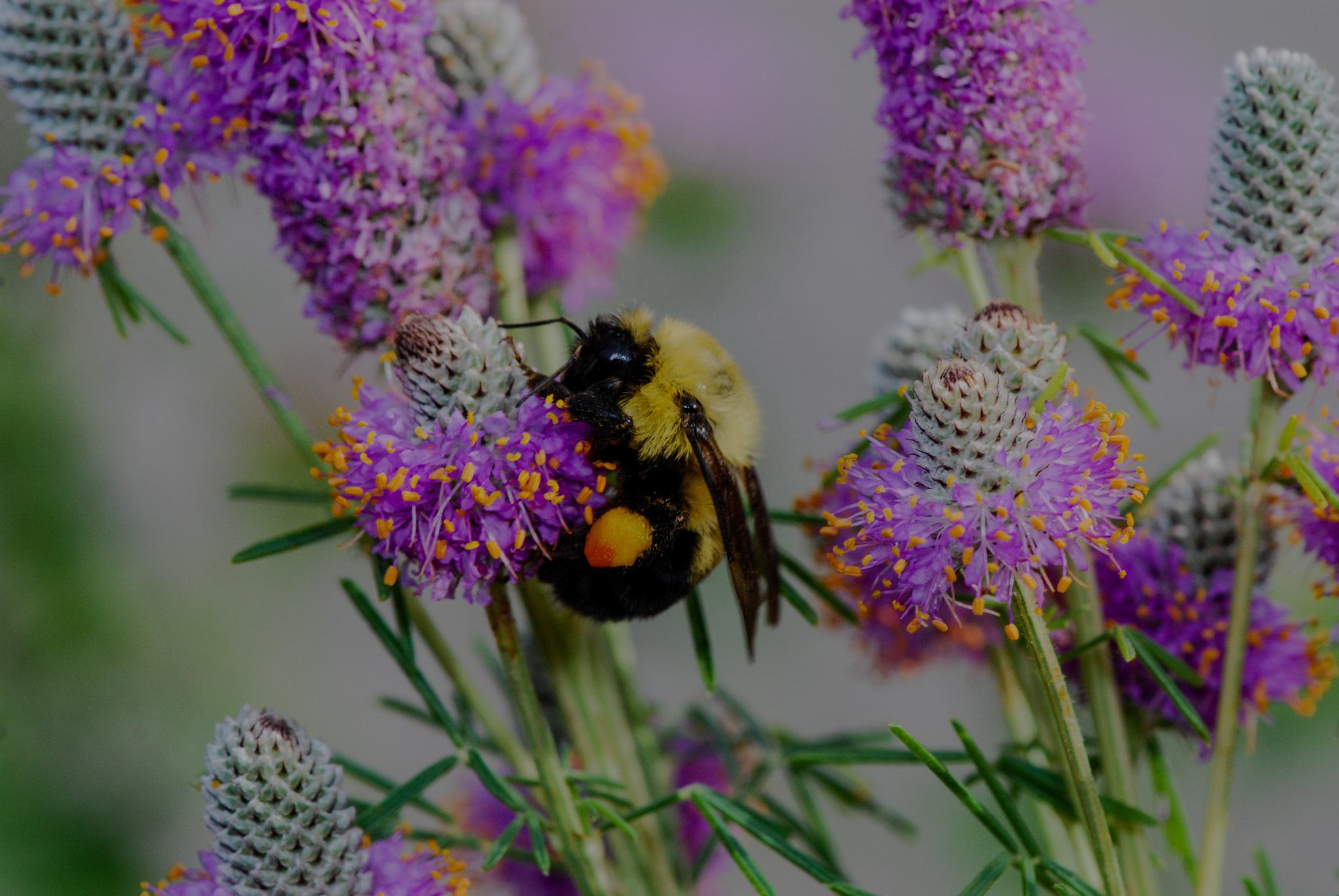
Center for Native Pollinator Conservation

Primary Conservation Objectives
- Focus on the importance and diversity of our native pollinators, especially native bees, for the maintenance and survival of wildlife, ecosystems and agriculture.
- Educating people about why pollinators are so important for the plants and wildlife around them as well as for their own well-being.
- Developing and supporting local, national and international collaborations to develop pollinator conservation programs and research.
- Advancing our understanding and appreciation of native bees and other pollinators.
The Saint Louis Zoo supports conservation of native pollinators
- Missourians for Monarchs and Missouri Department of Transportation – These two groups work together, along with utility companies, to develop Pollinator Rights of Ways, which could create thousands of acres of pollinator habitat throughout the state and create wildlife corridors between fragmented habitats.
- Honey Bee Health Coalition and Keystone Monarch Collaborative – These are broad coalitions of NGO’s, farmers and growers, agribusinesses, state and federal government agencies, universities, researchers, and beekeepers working towards honey bee, monarch and native pollinator conservation, especially in agricultural contexts.
- International Union for Conservation of Nature Species Survival Commission’s Bumblebee Specialist Group (BBSG) – Founded in part by the Center for Native Pollinator Conservation, the BBSG is a worldwide network of bumble bee researchers whose mission is to examine all species of bumble bees, establish their conservation statuses, and focus appropriate conservation and research efforts on species of greatest concern.
- Native Foods, Native Peoples, Native Pollinators – The initiative,
working on Tribal and Reservation land, focuses on the intersection of
wild and cultivated foods, cultural traditions and food sovereignty,
healthy environments and people, and the environment (as exemplified by
pollinators) and is helping develop a new direction for zoo-based
conservation efforts.
- Among American Indian/ Alaska Native people, federal policies forcibly separated Native people from their historical lands and traditional sources of food. This separation from healthy foods has become one of the most serious health problems in Indian Country. Additionally, many traditional belief systems include the concepts of harmony and balance in respect to food. These concepts can motivate individuals and communities to increase their use of traditional foods and adopt healthier lifestyles as well as conserving and improving pollinator habitat for food production and security.
- The Center for Native Pollinator Conservation works with the Ho-Chunk/Winnebago Tribe and Omaha Nation in Nebraska to plant milkweeds and pollinator habitat, along with native fruit and nut trees and shrubs that are traditional foods and pollinator dependent, increasing pollinator habitat. The Center is also working with tribes to plant traditional and heirloom crops to improve food security and sovereignty and to support pollinators. The Center is expanding its work with these tribes as well as with the Santee Sioux and Ponca in Nebraska, Oglala Lakota in South Dakota, the Confederated Salish and Kootenai of the Flathead Nation in Montana, and the Meskwaki in Iowa to develop and restore pollinator habitat, plant traditional food crops and wild plants, and develop bison/pollinator pastures and management.
- The Center also offers education and outreach programs to tribes. Each American Indian Nation, Tribe and Reservation may have slightly different issues and potential outcomes, but the overall program could benefit countless people and pollinators. The issues surrounding Native American food security and health as well as pollinator habitat and health are nationwide and ongoing. The Center sees an unrealized niche in pollinator conservation and human and cultural health within the conservation community.
How the Saint Louis Zoo and the Center for Native Pollinator Conservation are making a difference
- The Center has developed bee identification guides for landowners, farmers and gardeners.
- We survey areas within the St. Louis region to examine overall diversity and relative abundance of bee species and identify possible areas of conservation concern.
- We work alongside the City of St. Louis to educate individuals about native bees and monarch butterflies and develop best bee practices to ensure their survival.
- We work to develop and implement strategies for bumblebee and monarch butterfly conservation throughout the state of Missouri and the Midwest.
- We work with the Ho-Chunk/Winnebago Tribe and Omaha Nation in Nebraska. The Center is expanding its work with these tribes as well as with the Santee Sioux and Ponca in Nebraska, Oglala Lakota in South Dakota, the Confederated Salish and Kootenai of the Flathead Nation in Montana, and the Meskwaki in Iowa in Nebraska to plant milkweed and pollinator habitats, as well as traditional food crops, fruit and nut trees, and heirloom varieties to increase food security and sovereignty.
Climate Change Impact
The concern is that in thousands upon thousands of cases, we
don’t really know what environmental and genetic cues plants and
pollinators use. According to ecologist David Inouye of the University
of Maryland, some plant-pollinator pairs in a particular area likely do
respond to the same environmental cues, and it’s reasonable to expect
they will react similarly to climate change. Migratory pollinators, like
hummingbirds, seem to be particularly at risk, since climate change
will almost certainly affect different latitudes differently. There is
no guarantee that the thousands of plant-pollinator interactions that
sustain the productivity of our crops and natural ecosystems won’t be
disrupted by climate change.
Resources on Bees, Bee Gardening and Bee Blocks
Guide: Bumble Bees of Illinois and Missouri
Guide: Common Bee Identification
Top 10 Bees in Spring
Top 10 Bees in Summer
Top 10 Bees in Fall
Pollinator Garden Menu
Upper Midwest Plants for Bees
South Central Plants for Bees
General Plants for Bees
Native Bees for Agriculture
Three Steps to Help Bees and Butterflies
Build your own nests for Native Bees

